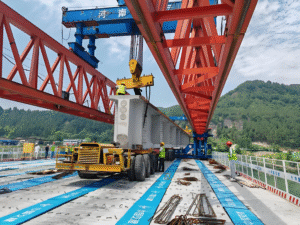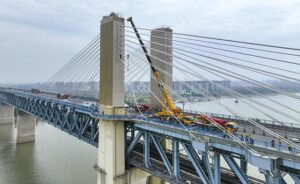Introduction
Prestressed concrete is a widely used construction technique that enhances the strength and durability of structures by applying compressive stresses before external loads are introduced. A critical component in this process is the multi-strand jack and multi-strand anchorage system, which ensures efficient force transfer.
In this guide, we’ll walk you through the step-by-step process of applying prestressed multi-strand jacks for tensioning multi-strand anchorages, while incorporating high-ranking SEO keywords to help professionals find this resource easily.
Step-by-Step Guide to Applying Multi-strand Jacks for Anchorage Tensioning
1. Preparation & Safety Checks
-
Inspect the multi-strand jack and anchorage system for damage.
-
Ensure all strands (PT tendons) are properly aligned in the duct.
-
Verify that the anchor wedges are clean and free from debris.
2. Installing the Multi-strand Jack
-
Position the multi-strand hydraulic jack over the strands.
-
Secure the jack to the bearing plate and ensure proper seating.
-
Connect the hydraulic pump and perform a pressure test to check for leaks.
3. Applying Prestressing Force
-
Gradually increase hydraulic pressure to tension the strands.
-
Monitor the elongation and pressure gauge readings to ensure accuracy.
-
Refer to PTI guidelines for acceptable tolerances in force application.
4. Locking the Strands in the Anchorage
-
Once the desired force is achieved, release hydraulic pressure slowly.
-
The anchor wedges will grip the strands, maintaining the prestressing force.
-
Trim excess strands and apply corrosion protection if required.
5. Post-Tensioning Verification
-
Measure final elongation and compare it with theoretical calculations.
-
Use load cells or strain gauges for force verification if necessary.
-
Document all readings for quality assurance.
Why Proper Tensioning Matters
Improper tensioning can lead to:
-
Loss of prestress force (leading to structural weakness)
-
Strand slippage (causing anchorage failure)
-
Uneven load distribution (increasing cracking risk)
For best practices, consult ACI 423.7-14 on post-tensioning systems.






